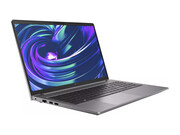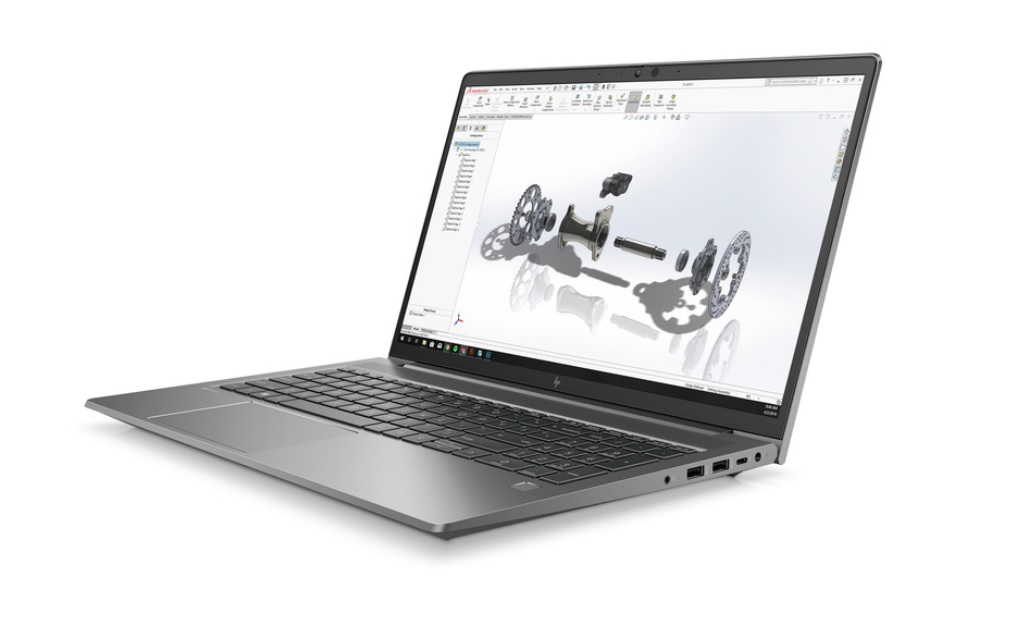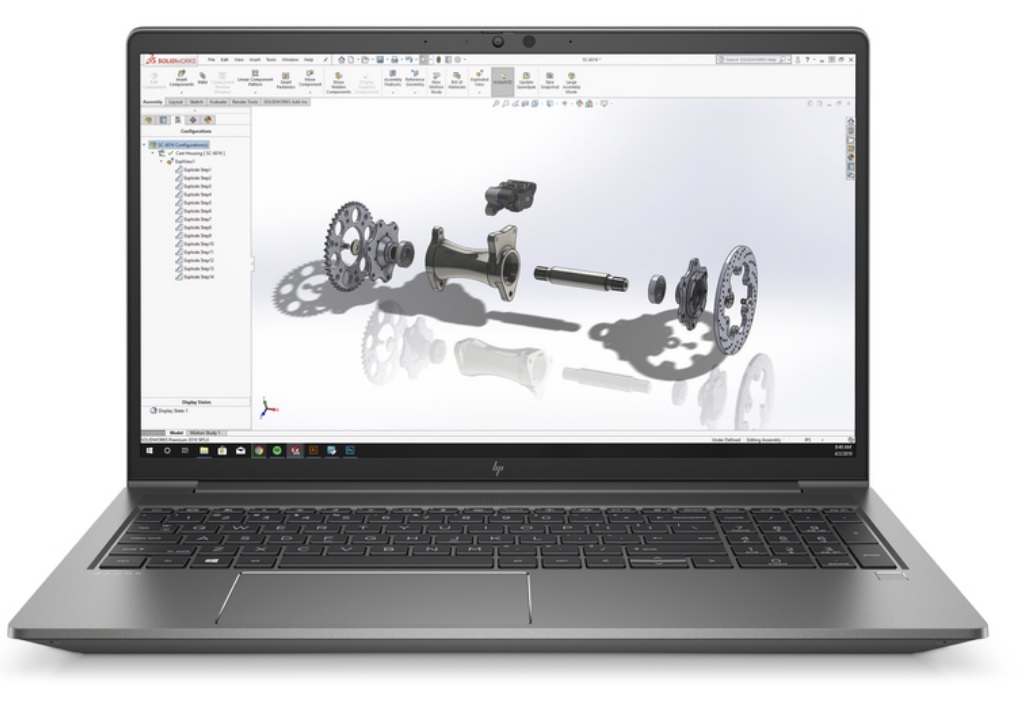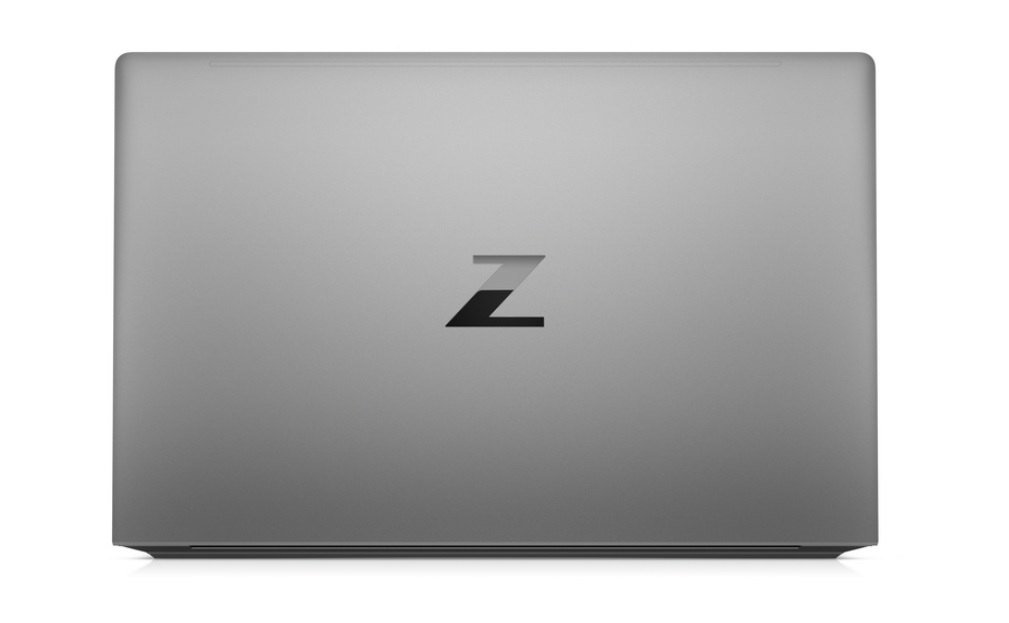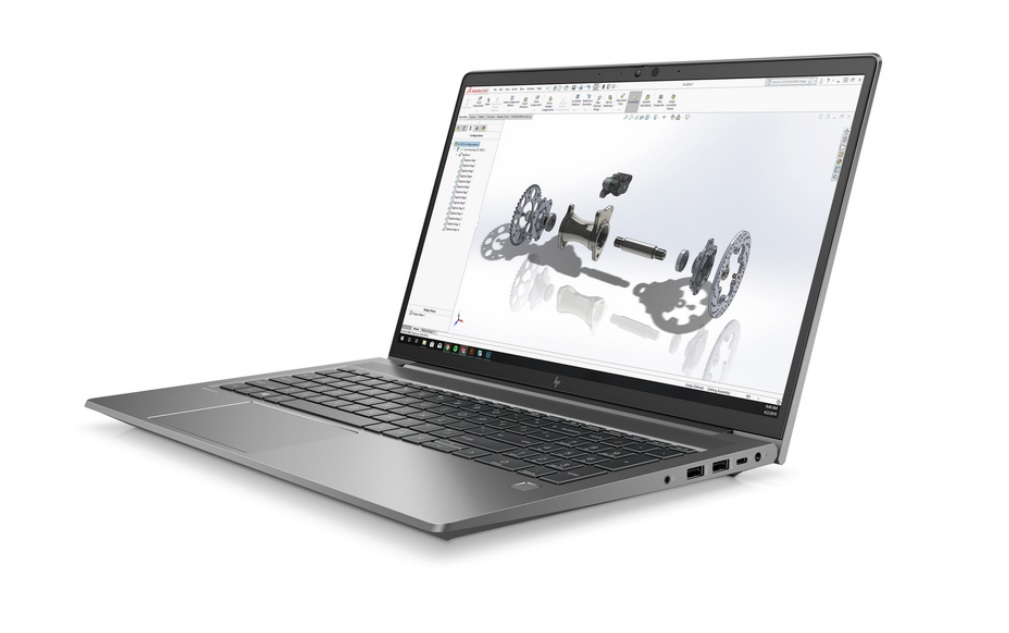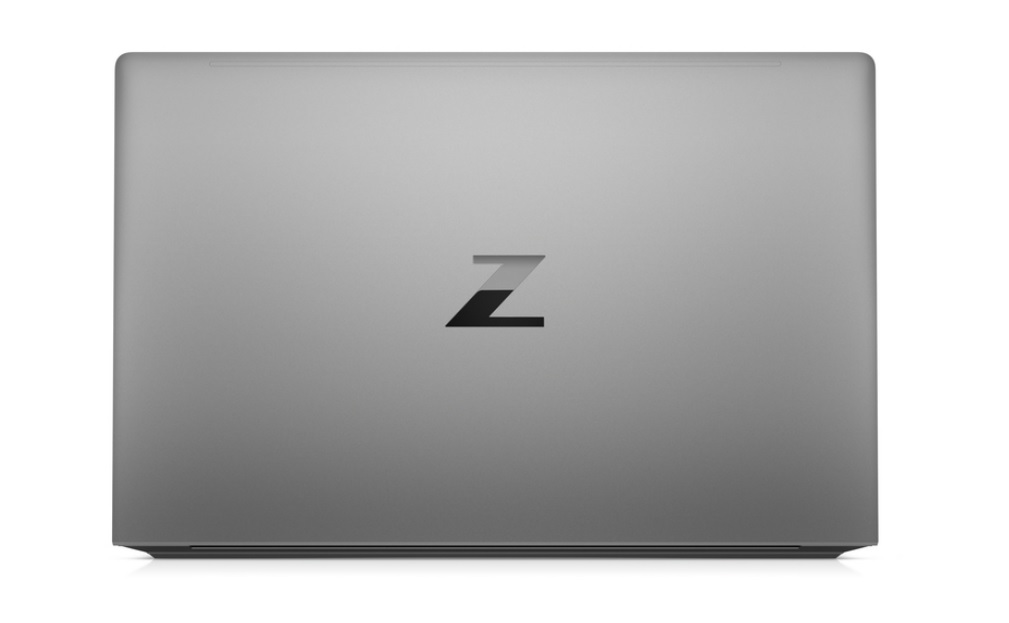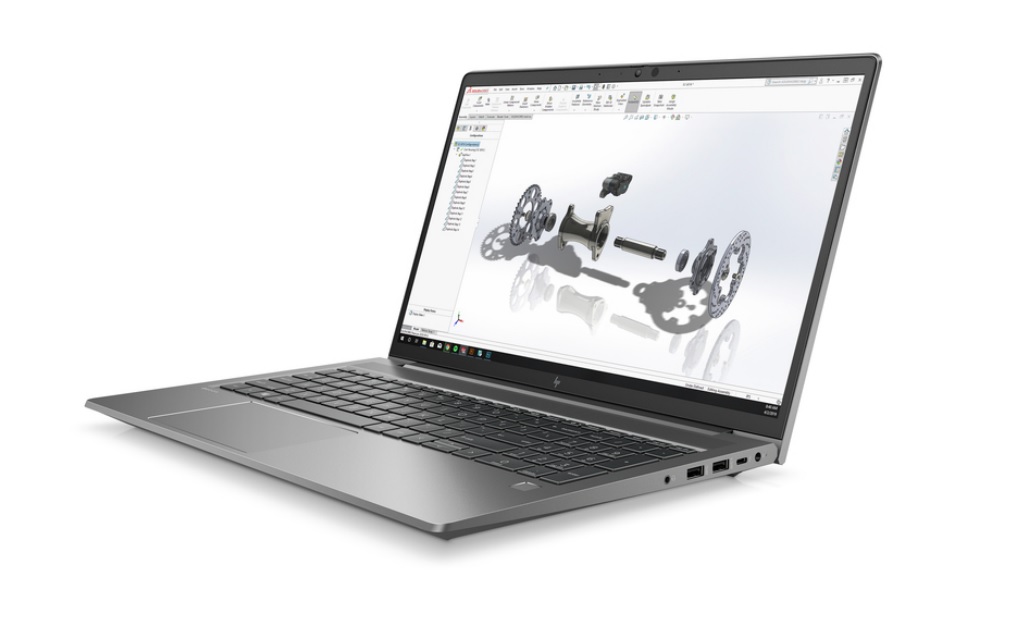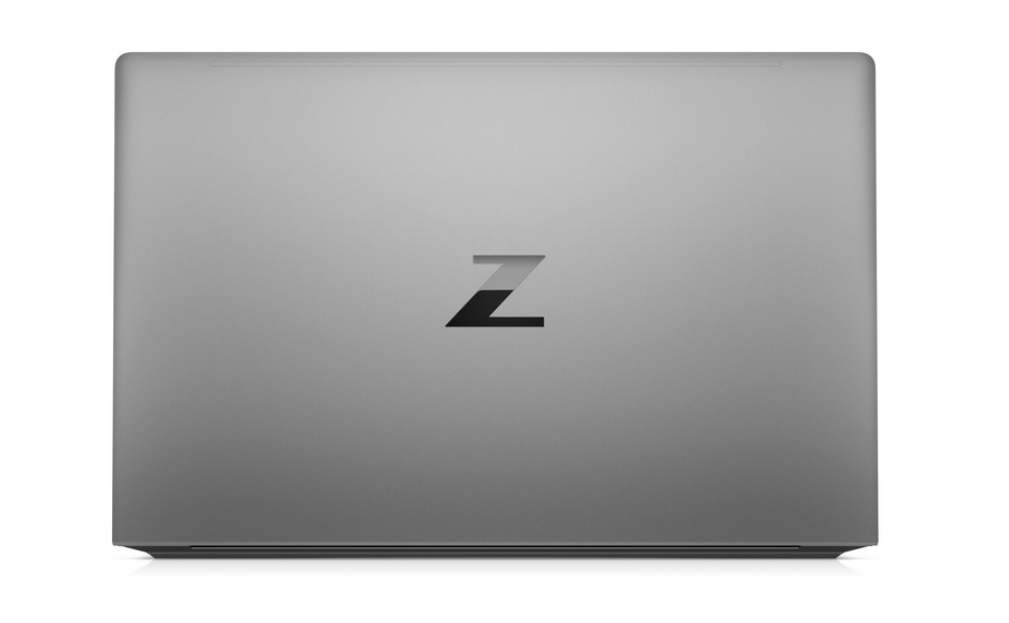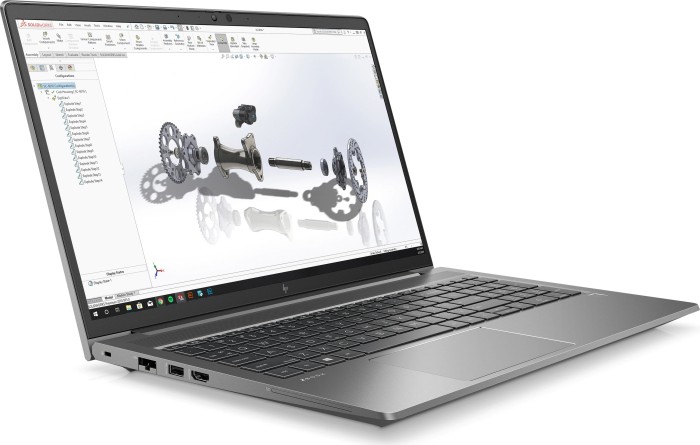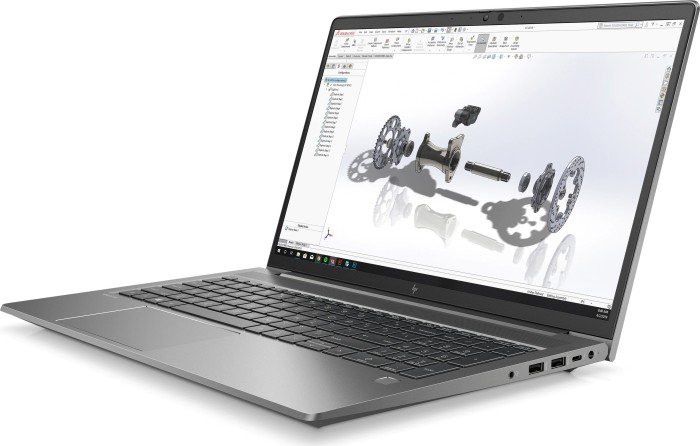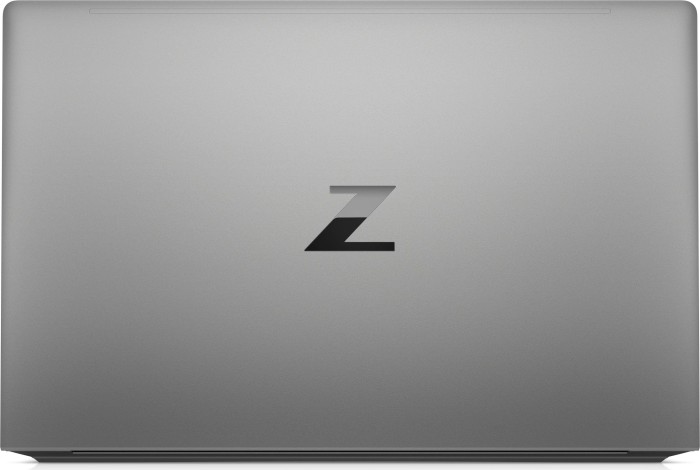HP ZBook Power 15 Serie
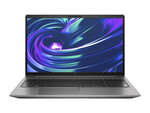 Prozessor: AMD Phoenix (Zen 4) R9 PRO 7940HS, Intel Comet Lake i7-10750H, Intel Raptor Lake-H i7-13700H, Intel Tiger Lake i7-11800H, Intel Tiger Lake i7-11850H, Intel Tiger Lake i9-11950H
Prozessor: AMD Phoenix (Zen 4) R9 PRO 7940HS, Intel Comet Lake i7-10750H, Intel Raptor Lake-H i7-13700H, Intel Tiger Lake i7-11800H, Intel Tiger Lake i7-11850H, Intel Tiger Lake i9-11950HGrafikkarte: NVIDIA Quadro T1000 Max-Q, NVIDIA RTX 2000 Ada Generation Laptop, NVIDIA RTX A1000 Laptop GPU, NVIDIA RTX A2000 Laptop GPU, NVIDIA T1200 Laptop GPU, NVIDIA T600 Laptop GPU
Bildschirm: 15.60 Zoll
Gewicht: 1.89kg, 1.92kg, 1.974kg, 2.001kg
Preis: 1600, 1700, 1800 Euro
Durchschnitt von 6 Bewertungen (aus 13 Tests)
HP ZBook Power G7, i7-10750H Quadro T1000 Max-Q
Ausstattung / Datenblatt
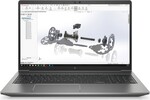 Notebook: HP ZBook Power G7, i7-10750H Quadro T1000 Max-Q
Notebook: HP ZBook Power G7, i7-10750H Quadro T1000 Max-QProzessor: Intel Comet Lake i7-10750H
Grafikkarte: NVIDIA Quadro T1000 Max-Q 4096 MB
Bildschirm: 15.60 Zoll, 16:9, 1920 x 1080 Pixel
Gewicht: 1.92kg
Links: HP Startseite
Preisvergleich
Ausländische Testberichte
Quelle: Laptop Media
 Archive.org version
Archive.org versionEinzeltest, online verfügbar, Mittel, Datum: 07.05.2021
Quelle: Laptop Media
 Archive.org version
Archive.org versionSupport, online verfügbar, Sehr kurz, Datum: 28.04.2021
Quelle: Laptop Media
 EN→DE Archive.org version
EN→DE Archive.org versionIn general, the ZBook Power G7 is a very solid mobile workstation. Not only when it comes to power, but also, when you take in place the user experience. Once you purchase this unit, you will be complemented by the backlit spill-resistant keyboard, which extremely comfortable to use. Also, despite the lack of dedicated buttons, the touchpad feels solid and has an exceptional clicking mechanism
Einzeltest, online verfügbar, Sehr Lang, Datum: 27.04.2021
HP ZBook Power G8, i9-11950H T1200
Ausstattung / Datenblatt
 Notebook: HP ZBook Power G8, i9-11950H T1200
Notebook: HP ZBook Power G8, i9-11950H T1200Prozessor: Intel Tiger Lake i9-11950H
Grafikkarte: NVIDIA T1200 Laptop GPU 4096 MB
Bildschirm: 15.60 Zoll, 16:9, 1920 x 1080 Pixel
Gewicht: 1.89kg
Links: HP Startseite
Preisvergleich
Ausländische Testberichte
Quelle: PC Mag
 EN→DE Archive.org version
EN→DE Archive.org versionThe ZBook Power G8 is poised to be HP's most affordable mobile workstation when it launches. (It's expected to ship, and pricing should be announced, in June.) But you'd never know it from the pre-production unit the company sent us. Our preview configuration features a screaming eight-core Intel Core i9-11950H processor (one of Intel's just-announced "Tiger Lake-H" top-end mobile CPUs), a 4K instead of 1080p resolution display, a hefty 64GB of RAM, and a 2TB solid-state drive. The only less-than-top-of-the-line thing about it is that its RTX A2000 is only the fourth-fastest of the Nvidia's new professional GPUs. But HP had to save something for the new ZBook Studio G8 and ZBook Fury G8 models higher up the stack and released alongside the Power G8.
Einzeltest, online verfügbar, Mittel, Datum: 11.05.2021
HP ZBook Power G8, 11850H A2000
Ausstattung / Datenblatt
 Notebook: HP ZBook Power G8, 11850H A2000
Notebook: HP ZBook Power G8, 11850H A2000Prozessor: Intel Tiger Lake i7-11850H
Grafikkarte: NVIDIA RTX A2000 Laptop GPU 4096 MB
Bildschirm: 15.60 Zoll, 16:9, 3840 x 2160 Pixel
Gewicht: 1.89kg
Links: HP Startseite
Preisvergleich
Bewertung:
Ausländische Testberichte
Quelle: PC Mag
 EN→DE Archive.org version
EN→DE Archive.org versionOur current Editors' Choice honoree among mobile workstations is the Lenovo ThinkPad P15 (the P15 Gen 2 is now in our review pipeline), but not all engineering and tech college students or small-office architects can afford such a powerhouse. The HP ZBook Power G8 is a 15.6-inch laptop that starts at $1,899 ($4,013 as tested). It's more for 2D design than 3D CGI rendering or virtual reality creation—its Nvidia RTX A2000 is only the graphics chipmaker's fourth fastest professional GPU—and it doesn't offer the Intel Xeon processors, error-correcting-code (ECC) memory, or dazzling DreamColor screens of HP's best ZBooks. But the Power still packs plenty of muscle for crunching large datasets, and has enough winning features to snare an Editors' Choice award of its own for entry-level mobile workstations.
Einzeltest, online verfügbar, Lang, Datum: 10.09.2021
Quelle: Laptop Mag
 EN→DE Archive.org version
EN→DE Archive.org versionThe stellar performance of the HP ZBook Power G8 may be enough to make some overlook the issues with the laptop — this is a workstation after all. But with a number of solid alternatives on the market, it shouldn’t be your first choice. For most users, there are just too many tradeoffs in a laptop that could be several thousand dollars when configured properly. Creatives, in particular, need to look elsewhere; the display is simply not suitable for video or photo work. Even for those that aren’t worried about the display, the heat rises to the level of being a concern to me as 110 degrees is considerably beyond our threshold and concerning for the overall thermal performance of this laptop. The HP ZBook Power G8 is a capable workstation that is able to tackle most computing tasks thrown at it, but unless you are essentially using it as a desktop and aren’t affected by many of the drawbacks that I’ve pointed out, there are better options available.
Einzeltest, online verfügbar, Lang, Datum: 28.08.2021
Bewertung: Gesamt: 70%
HP ZBook Power G8, 11800H T600
Ausstattung / Datenblatt
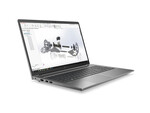 Notebook: HP ZBook Power G8, 11800H T600
Notebook: HP ZBook Power G8, 11800H T600Prozessor: Intel Tiger Lake i7-11800H
Grafikkarte: NVIDIA T600 Laptop GPU 4096 MB
Bildschirm: 15.60 Zoll, 16:9, 1920 x 1080 Pixel
Gewicht: 1.89kg
Preis: 1700 Euro
Links: HP Startseite
Preisvergleich
Ausländische Testberichte
Quelle: Laptop Media
 Archive.org version
Archive.org versionSupport, online verfügbar, Sehr kurz, Datum: 19.10.2021
Quelle: Laptop Media
 EN→DE Archive.org version
EN→DE Archive.org versionOkay guys, today we have a huge dilemma waiting to be solved. Should you buy the ZBook Power G8, Dell Precision 15 3561, or Lenovo ThinkPad P15v Gen 2. Ultimately, they are all mobile workstations, which claim to be on the more affordable section of the market. Well, starting with the design, the HP we had here today is the only device of the three to come with a metal design. Additionally, the build quality is on point, and we observed high structural integrity. Additionally, one of the two M.2 PCIe x4 slots supports Gen 4 drives, and both M.2 slots can work in RAID mode. Respectively, the I/O seemed pretty standard, although the lack of an SD card reader was a bit unsettling. Nevertheless, you get Thunderbolt 4 support. Other features include an optional IR face recognition scanner, a fingerprint reader, and a privacy shutter on the HD Web camera. Thankfully, the keyboard is comfortable for typing, has a backlight, and is spill-resistant. As for the battery, it lasted for 8 hours and 28 minutes of Web browsing, and 13 hours and 31 minutes of video playback.
Einzeltest, online verfügbar, Sehr Lang, Datum: 18.10.2021
HP ZBook Power 15 G8 313S5EA
Ausstattung / Datenblatt
 Notebook: HP ZBook Power 15 G8 313S5EA
Notebook: HP ZBook Power 15 G8 313S5EAProzessor: Intel Tiger Lake i7-11800H
Grafikkarte: NVIDIA T600 Laptop GPU 4096 MB
Bildschirm: 15.60 Zoll, 16:9, 1920 x 1080 Pixel
Gewicht: 1.974kg
Preis: 1600 Euro
Links: HP Startseite
Preisvergleich
Testberichte
HPs günstiges ZBook Power G8 zeigt in unserem Laptop-Test mit Intels Core i7-11800H eine gute, aber inkonsistente Workstation-Performance. Unser Modell kommt mit einer Nvidia T600, punktet mit sehr guten Laufzeiten, Eingabegeräten und einem hellen FHD-Panel.
HP ZBook Power 15 G10, PRO 7940HS
HP ZBook Power 15 G10 jetzt bei AmazonAusstattung / Datenblatt
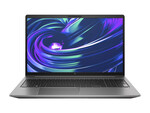 Notebook: HP ZBook Power 15 G10, PRO 7940HS
Notebook: HP ZBook Power 15 G10, PRO 7940HSProzessor: AMD Phoenix (Zen 4) R9 PRO 7940HS
Grafikkarte: NVIDIA RTX 2000 Ada Generation Laptop 8192 MB
Bildschirm: 15.60 Zoll, 16:9, 2560 x 1440 Pixel
Gewicht: 2.001kg
Preis: 1800 Euro
Links: HP Startseite
Preisvergleich
Bewertung:
Ausländische Testberichte
Quelle: PC Guia
 PT→DE
PT→DEEinzeltest, online verfügbar, Kurz, Datum: 20.02.2024
Bewertung: Gesamt: 88%
Quelle: Computer World DK
 DA→DE
DA→DEEinzeltest, online verfügbar, Kurz, Datum: 07.03.2024
Bewertung: Gesamt: 67%
HP ZBook Power 15 G10, i7-13700H RTX A1000
HP ZBook Power 15 G10 jetzt bei AmazonAusstattung / Datenblatt
 Notebook: HP ZBook Power 15 G10, i7-13700H RTX A1000
Notebook: HP ZBook Power 15 G10, i7-13700H RTX A1000Prozessor: Intel Raptor Lake-H i7-13700H
Grafikkarte: NVIDIA RTX A1000 Laptop GPU 6144 MB
Bildschirm: 15.60 Zoll, 16:9, 1920 x 1080 Pixel
Gewicht: 2.001kg
Links: HP Startseite
Preisvergleich
Bewertung:
Ausländische Testberichte
Quelle: Tweakers
 NL→DE
NL→DEEinzeltest, online verfügbar, Kurz, Datum: 04.04.2025
Bewertung: Gesamt: 80%
Quelle: Tweakers
 NL→DE
NL→DEUser-Test, online verfügbar, Sehr kurz, Datum: 18.12.2024
Bewertung: Gesamt: 80%
Kommentar
HP: 1939 gegründet, ist das US-Unternehmen ein wichtiger Server und Druckerhersteller und eines der führenden IT-Unternehmen weltweit. Bis 2015 hieß das Unternehmen Hewlett-Packard Company. Nach einer Aufspaltung wurde der Computer-Bereich in HP Inc. umbenannt.
2023 hatte HP einen ungefähren Marktanteil von 22% am weltweiten PC-Absatz und war damit die Nummer 2 nach Lenovo.
Diese Klasse ist noch durchaus fähig neueste Spiele flüssig darzustellen, nur nicht mehr mit allen Details und in hohen Auflösungen. Besonders anspruchsvolle Spiele laufen nur in minimalen Detailstufen, wodurch die grafische Qualität oft deutlich leidet. Diese Klasse ist nur noch für Gelegenheitsspieler empfehlenswert. Der Stromverbrauch von modernen Grafikkarten in dieser Klasse ist dafür geringer und erlaubt auch bessere Akkulaufzeiten.
NVIDIA Quadro T1000 Max-Q: Professionelle Mid-Range Notebook-Grafikkarte der Turing Generation. Mit 768 Shadern unterhalb der Consumer GTX 1650 (896 Shader) angeordnet. Bietet keine Raytracing und Tensor-Kerne im Gegensatz zu den stärkeren RTX Modellen. Die Max-Q Variante ist auf Effizienz optimiert und bietet verringerte Taktraten verglichen zur normalen Max-P Version. Es gibt zwei Varianten mit 35 bzw 40 Watt TGP und 795 - 1455 bzw 1230 - 1455 MHz. Diese Unterscheiden sich nur im Basistakt von der normalen Version.
NVIDIA T1200 Laptop GPU: Professionelle Mid-Range Notebook-Grafikkarte der Turing Generation. Mit 1024 Shadern vergleichbar mit der GTX 1650 Ti Consumer Grafikkarte. Bietet keine Raytracing und Tensor-Kerne im Gegensatz zu den stärkeren RTX Modellen.
NVIDIA T600 Laptop GPU: Professionelle Mid-Range Notebook-Grafikkarte der Turing Generation. Mit 896 Shadern vergleichbar mit der GTX 1650 Consumer Grafikkarte. Bietet keine Raytracing und Tensor-Kerne im Gegensatz zu den stärkeren RTX Modellen.
NVIDIA RTX A1000 Laptop GPU: Professionelle High-End Notebook-Grafikkarte und ähnlich zu der Consumer RTX 3050 für Laptops mit 2.048 CUDA Kernen. Erhältlich in verschiedenen Varianten von 35 - 95 W maximalen Stromverbrauch und unterschiedlicher Leistung.
Diese Grafikkarten sollten alle modernen Spiele flüssig darstellen können. Anspruchsvolle Spiele müssen jedoch in mittlerer Detailstufe gespielt werden. Ältere und weniger anspruchsvolle Spiele wie die Sims Serie können auch in hohen Detailsstufen flüssig dargestellt werden.
NVIDIA RTX A2000 Laptop GPU: Professionelle High-End Notebook-Grafikkarte und ähnlich zu der Consumer RTX 3050 Ti für Laptops mit 2.560 CUDA Kernen. Erhältlich in verschiedenen Varianten von 35 - 95 W maximalen Stromverbrauch und unterschiedlicher Leistung.
NVIDIA RTX 2000 Ada Generation Laptop: Professionelle Mid-Range-Notebookgrafikkarte basierend auf die Ada Lovelace Architektur. Bietet 8 GB GDDR6 VRAM (128 Bit) und ca 35-115W TGP (+ Dynamic Boost). Basiert auf den selben Chip wie die RTX 4060 Mobile.
» Weitere Informationen gibt es in unserem Notebook-Grafikkartenvergleich und der Benchmarkliste.
Intel Comet Lake:
i7-10750H: Auf der Comet-Lake-Architektur basierender SoC (System-on-a-Chip) für große Notebooks. Integriert unter anderem sechs CPU-Kerne mit 2,6 - 5 GHz (wahrscheinlich 4,3 GHz bei allen 6 Kernen) und HyperThreading sowie eine Grafikeinheit und wird in 14-Nanometer-Technik gefertigt.
Intel Tiger Lake:
i9-11950H: Auf der Tiger-Lake-Architektur basierender SoC (System-on-a-Chip) für große Gaming Notebooks und mobile Workstations. Integriert unter anderem acht CPU-Kerne mit 2,6 - 5 GHz und HyperThreading sowie eine UHD Graphics Grafikeinheit (350 - 1450 MHz) und wird in 10-Nanometer-Technik gefertigt (10nm SuperFin). Unterstützt vPro aber keine Übertaktungsmöglichkeiten im Vergleich zum i9-11980HK.
i7-11850H: Auf der Tiger-Lake-Architektur basierender SoC (System-on-a-Chip) für große Gaming Notebooks und mobile Workstations. Integriert unter anderem acht CPU-Kerne mit 2,5 - 4.8 GHz und HyperThreading sowie eine UHD Graphics Grafikeinheit (350 - 1450 MHz) und wird in 10-Nanometer-Technik gefertigt (10nm SuperFin). Unterstützt die Business-/Managementfunktionen SIPP, vPRo und TXT.
i7-11800H: Auf der Tiger-Lake-Architektur basierender SoC (System-on-a-Chip) für große Gaming Notebooks und mobile Workstations. Integriert unter anderem acht CPU-Kerne mit 2,3 - 4.6 GHz und HyperThreading sowie eine UHD Graphics Grafikeinheit (350 - 1450 MHz) und wird in 10-Nanometer-Technik gefertigt (10nm SuperFin).
AMD Phoenix (Zen 4):
R9 PRO 7940HS: High-End-Mobil-8-Kern Prozessor mit 16 Threads. Taktet mit maximal 5,2 GHz auf einem Kern und kann dadurch in Single- und auch Multi-Thread-Anwendungen überzeugen. Nutzt die Zen 4 Architektur und hat einen konfigurierbaren TDP von 35-54 Watt. Integriert AMD PRO Technologien mit Management und Sicherheitsfunktionen.
Intel Raptor Lake-H:
i7-13700H: Auf der Alder-Lake-Architektur basierender High-End Mobilprozessor. Bietet 6 Performance-Kerne und 8 Effizienzkerne und kann 20 Threads gleichzeitig bearbeiten. Der maximale Turbo-Takt der P-Kerne beträgt 5 GHz (Single-Thread-Turbo).
» Weitere Infos gibt es in unserem Prozessorvergleich Vergleich mobiler Prozessoren und der Prozessoren Benchmarkliste .
» Prüfen Sie in unserer DPI Liste, welche Displays wie fein aufgelöst sind.
1.89 kg:
Most smartphones and only a few tablets fall into this weight category. Only a few smartphones are heavier and should rather be considered tablets.
2.001 kg:
78.78%: Weltbewegend ist diese Bewertung nicht. Diese Bewertung muss man eigentlich als unterdurchschnittlich ansehen, denn es gibt etwa ebenso mehr Geräte mit schlechtere Beurteilungen als Besseren. Eine Kaufempfehlung kann man nur mit viel Wohlwollen darin sehen, es sei denn es handelt sich um Websites, die generell streng urteilen.
» Lesen Sie auch unsere Notebook-Kaufberatung.


